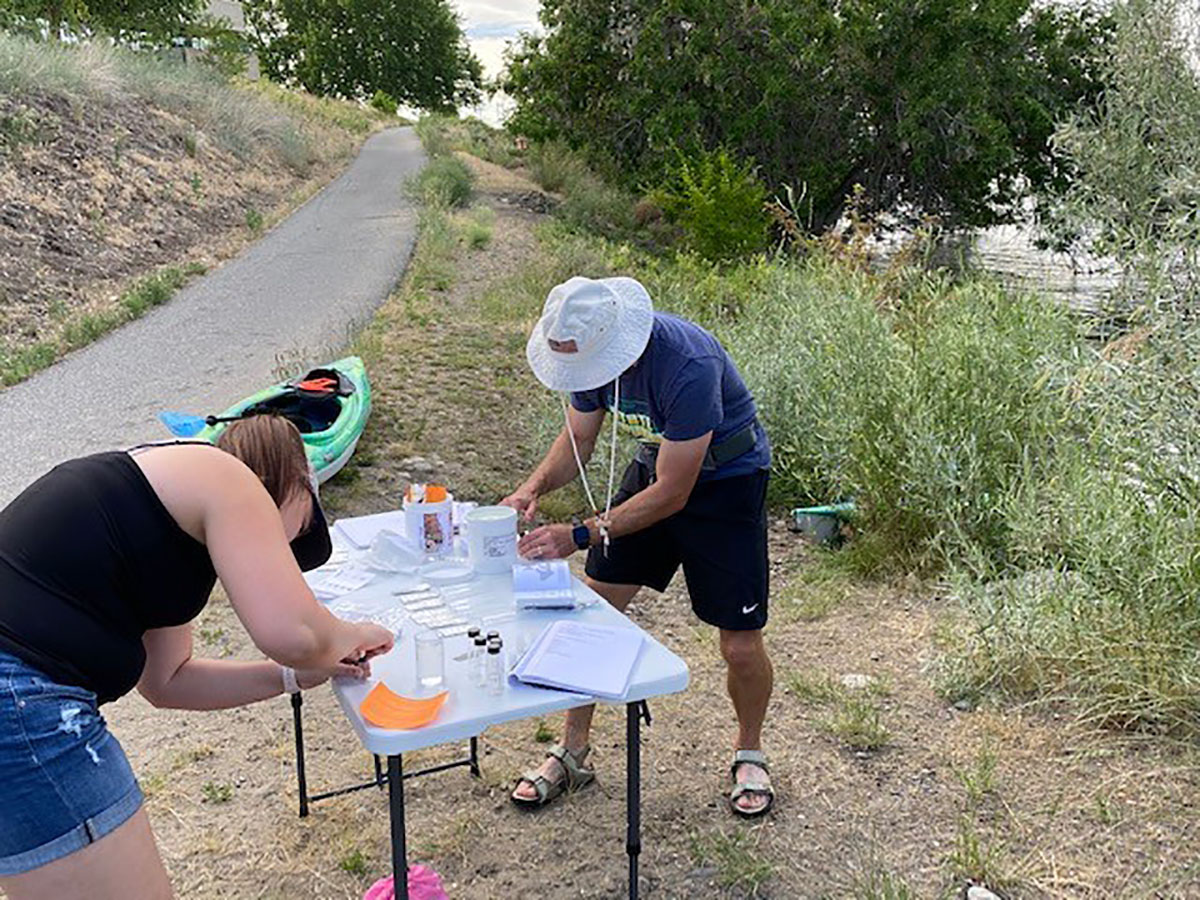How do we reintroduce salmon populations back to the upper Columbia River…and how can finding a solution translate to a school STEM curriculum? Regional science teachers and scientists from Pacific Northwest National Laboratory (PNNL) worked together to answer these questions as part of the STEM-It Mathematics, Engineering, and Science Achievement (MESA) Scientist-Teacher Partnership. The week-long workshop on June 22-26, gives teachers the opportunity to work with scientists on a region-based problem and develop their knowledge and skills to improve STEM instruction in their schools and classrooms.

Virtual Learning is a family affair
While originally planned to be held in-person, quick planning by ESD 123 Science Coordinator Lorianne Donovan-Hermann and PNNL scientists brought the workshop into teachers’ homes. Boxes of materials, including water quality tests, Squishy Circuits electrical circuit teaching kits, and otolith bones from salmon, allowed participants to model activities they would have done in the lab, while scientists guided them and collaborated via videoconferencing.
With these materials and guidance, teachers worked hands-on to evaluate characteristics of Chinook and Sockeye salmon that could impact establishing their population in the upper Columbia River System. Teachers began the week by sorting cards picturing salmon in various stages of the life cycle, identifying the different points of their life important in determining how to establish a population in the wild. Characteristics such as spawning and rearing, migration, and juvenile survival were all considered. Life history traits were guided by Fisheries Researcher, Alison Colotelo and Fisheries Biologist Megan Nims. Next, Huidong Li, a Material Scientist/Engineer guided the teachers through the electrical circuits necessary for tracking salmon. Teachers figured out how radio telemetry, PIT (passive integrated transponders) tags, and acoustic tags gathered data on fish migrations. Finally, Frannie Smith an Environmental Mineralogist lead teachers through mineral labs and a geologic history of Washington State. Teachers applied this new knowledge to how salmon migrations can be tracked by using otolith (fish ear bones) to know which streams and rivers the salmon migrated through in their lifetime. At the conclusion of the week the teachers from Pasco, Richland, and Othello presented their findings and offered best solutions thinking to the scientists.

The STEMit Team on Zoom for Virtual Workshop
When asked about the science/teacher partnership experience here is what one teacher said, “It was AWESOME to get to experience this as a learner. We were excited to have a real-life problem to solve, and maybe actually make an impact in the research, and feel like we did something important. I know from my own experiences as a student, that some of my science classes became much more interesting (and easier) once they connected to my research and I could understand why learning it was important. Students NEED these connections and crave having some meaning to their studies.”
Another teacher said, “The scientists were absolutely amazing. They kept saying that they aren’t teachers, but they sure did a great job teaching, and presented some really complex stuff in ways we could all understand. Bravo to them. I appreciated all of their techniques for engagement, from the hands-on activities, to their information resources, and their time spent with us in large groups and in the smaller groups. They all were great!”
When teachers were asked how working with the Regional Science Coordinator supported teacher learning a teacher commented, “Lorianne did a great job facilitating and guiding the discussion. She helped me remember to think about how this type of lesson could be implemented in my classroom as opposed to just focusing on learning science information. In other words, she helped me remember to keep my teacher hat on even while I was acting as a student.” Another response was, “She was fantastic at facilitating each Zoom session and was incredibly positive the whole time, creating a learning environment that greatly encouraged learning and collaboration among teachers and scientists.”
The whole STEM-it experience demonstrates how valuable ongoing teacher professional development is essential for the benefits of students. This event also illustrates how virtual learning can be done in a meaningful manner. While educators know that nothing completely replaces the impact of face to face learning, in a pandemic, educators can respond and think flexibly to meet the needs of students.
To learn more about science workshops at ESD 123, contact Lorianne Donovan-Hermann at ldonovan@esd123.org.




